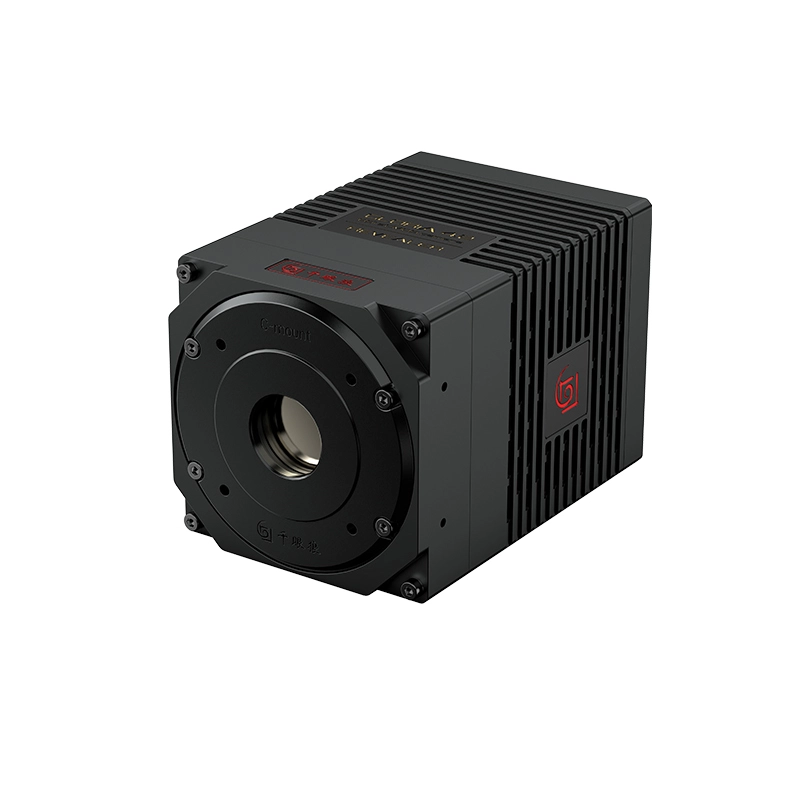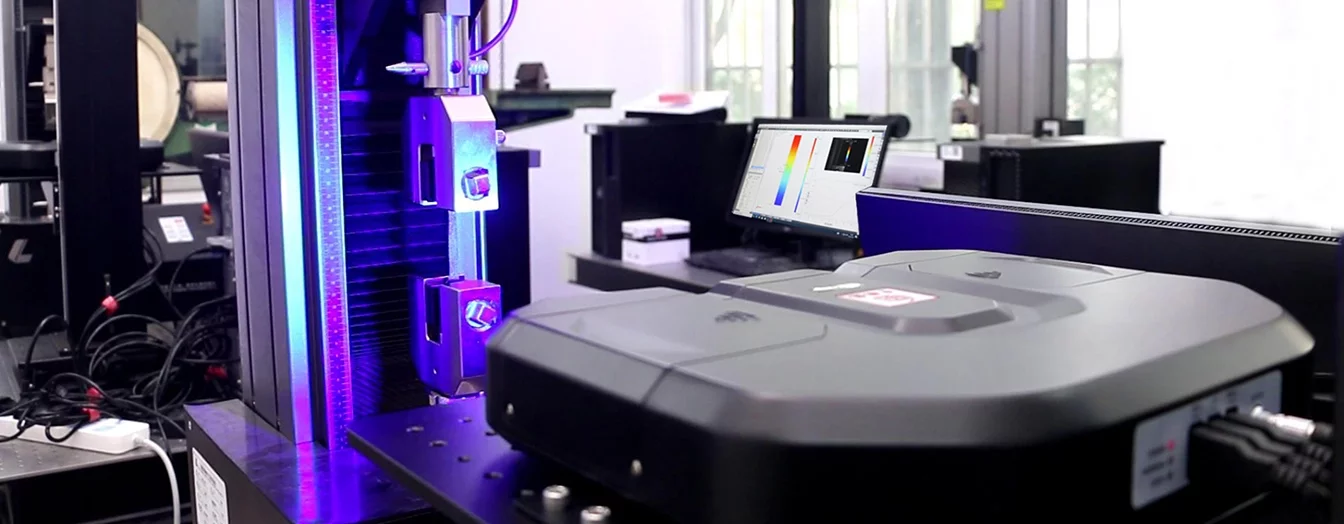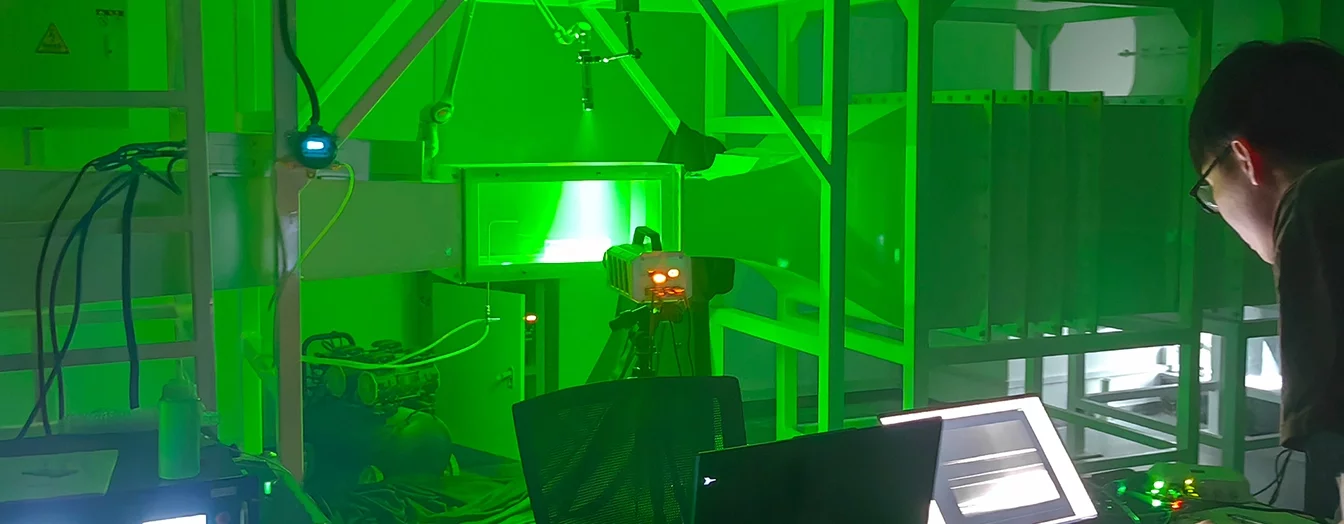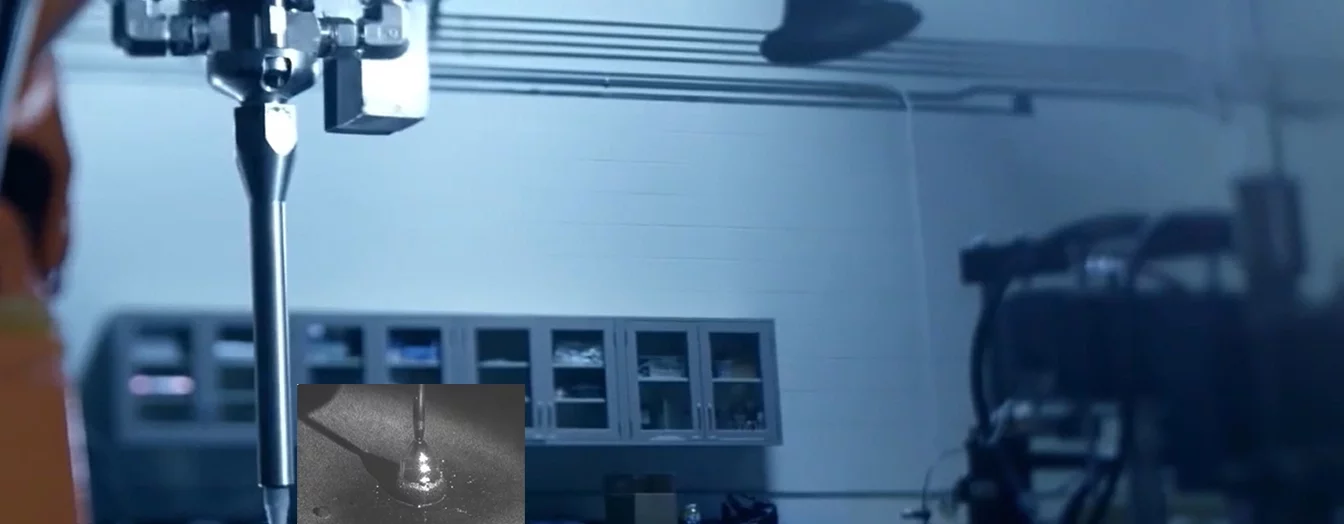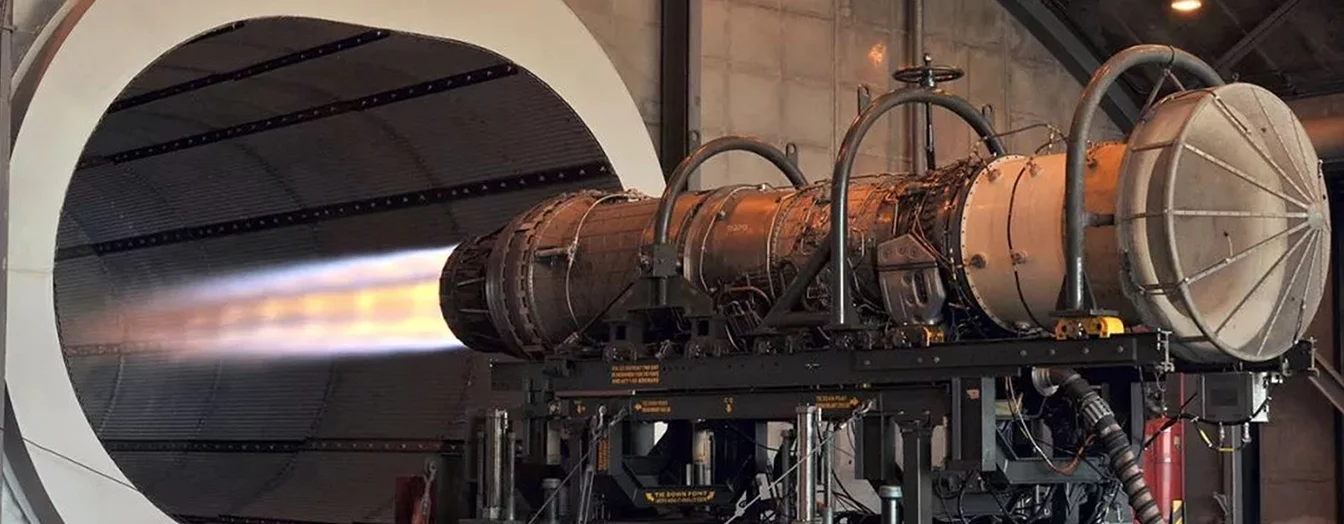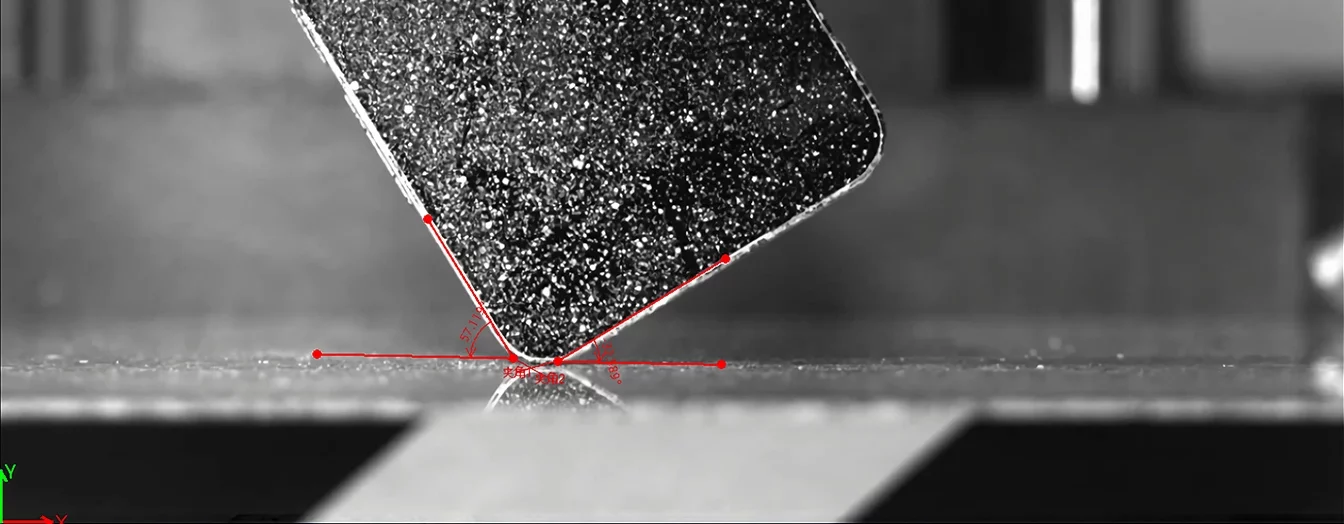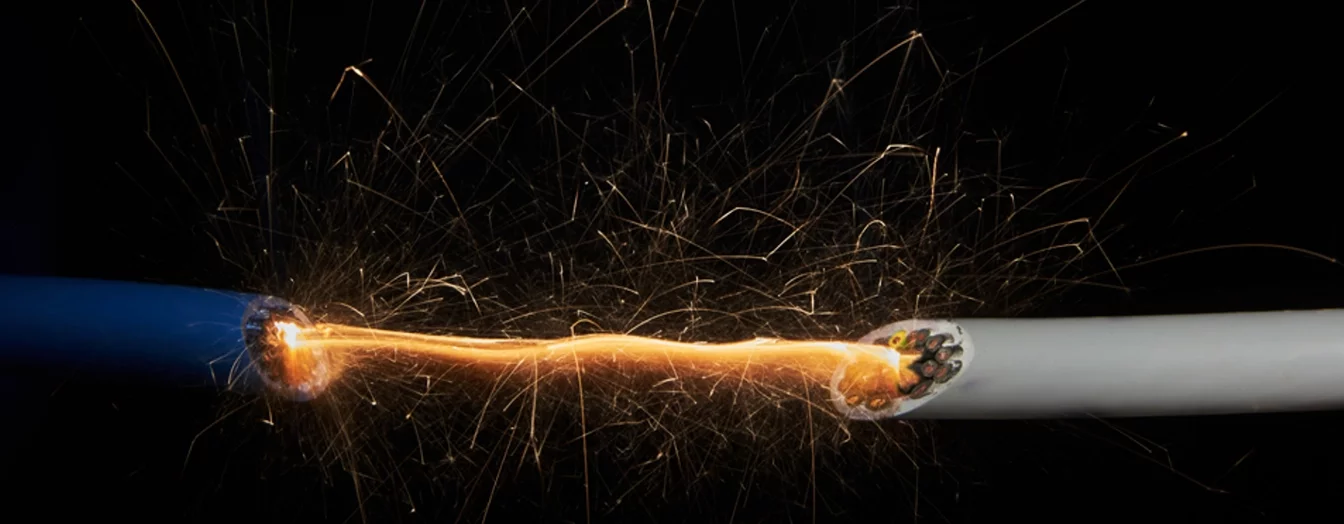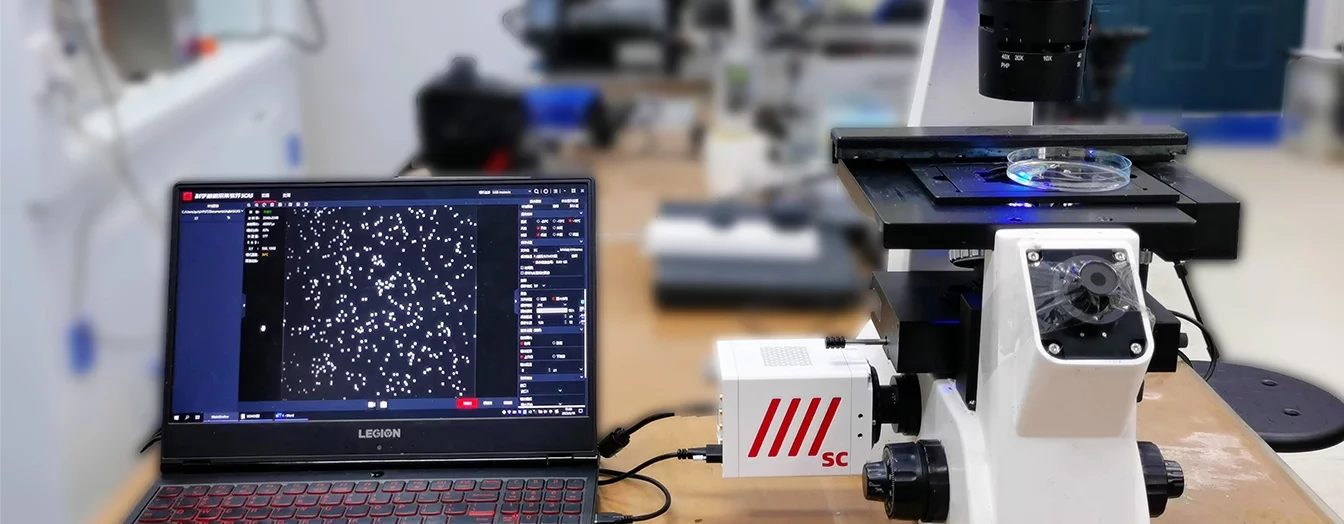1. 배경 소개
항공기 등유의 연소 특성을 심층적으로 이해하고 성능을 개선하는 것은 항공기 엔진에 필수적입니다. 그러나 항공 등유의 구성은 매우 복잡하여 모든 구성 요소의 연소 반응을 시뮬레이션하는 정확한 연료 역학 모델을 수립하기 어렵습니다. 이러한 과제에 대응하여 연구자들은 대체 연료(알려진 비율과 구성의 연료 혼합물)를 사용하여 실제 연료의 연소 특성을 모방하고 기계적 모델을 개발합니다. 중국에서 항공 등유로 널리 사용되는 RP-3는 많은 학자들의 시뮬레이션 연구 주제였습니다.
2. 연구 내용
쓰촨 대학의 연소 동역학 연구팀은 RP-3의 연소 특성을 조사하기 위해 대체 구성 요소를 사용하여 연소 특성을 탐색하고 매개변수를 최적화했습니다.

그림 1-- 실험 시스템의 개략도
연구팀은 연료를 공기와 혼합하고 전자 스파크를 사용하여 연소실에서 점화했습니다. 그들은 Revealer 고속 카메라(X213)와 Schlieren 이미징 시스템을 결합하여 고속 이미징 시스템을 형성했으며, 이는 20,000fps의 속도로 화염 전파 형태를 동기적으로 기록했습니다. 그들은 변수를 제어하여 다양한 압력과 온도에서 연소 특성을 테스트했습니다. 고속 이미징 시스템은 모든 순간 연소실의 연료 이미지를 명확하게 기록할 수 있었고, 이러한 이미지에서 연소 반경을 계산하여 연소 속도와 기타 매개변수를 결정했습니다. 렌더링은 아래와 같습니다.
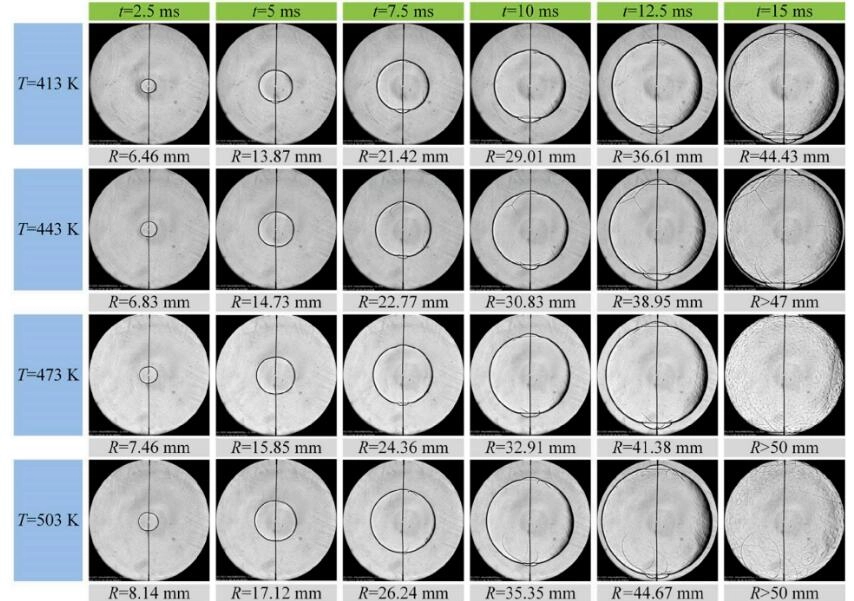
그림 2-- 일정한 압력(2bar)과 변화하는 온도에서 연소실 내부의 화염을 고속 슈리렌 이미지로 나타낸 것입니다.
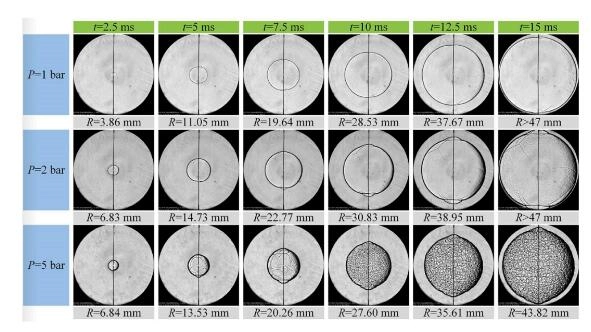
그림 3-- 일정한 온도(443K)와 다양한 압력에서 연소실의 화염을 고속 슈리렌 이미지로 촬영한 것입니다.
3. 연구 결론
1) 새로운 RP-3 등유 대체 연료가 개발되었고, 자세한 구성 비율도 함께 개발되었습니다. 연소 실험은 다른 조건에서 대체 연료와 RP-3 등유의 연소 특성(연소율 등)을 비교했습니다.
2) RP-3 대체 연료의 연소율은 초기 온도 또는 초기 압력이 상승함에 따라 상당히 증가했습니다. 연소율은 화학양론비 1.1 근처에서 최고치를 보였습니다. 또한, 실험 데이터와 시뮬레이션된 연소율은 KSRM 모델을 사용하여 검증되었습니다.
3) 초기 단계에서 화염 전파 반경은 압력 증가와 일치하지 않았습니다. 이러한 불일치는 과도한 점화 에너지와 화염 두께가 팽창하는 화염의 불안정한 전파에 미치는 영향과 관련이 있을 수 있습니다.
4) 압력이 증가함에 따라 RP-3 등유의 Markstein 길이는 상당히 감소했습니다. 그러나 다른 온도 조건에서 RP-3 등유의 Markstein 길이에는 유의미한 차이가 없었습니다. 또한 RP-3 등유의 Markstein 길이는 대체품의 성능과 일치했지만 RP-3 등유와 대체품 간의 Markstein 길이 차이는 연료가 풍부한 쪽에서 두드러졌습니다.
4. 산업 응용 요약
Schlieren 이미징 장치와 페어링된 고속 카메라로 구성된 이 관찰 시스템은 공기 흐름, 연소, 충격파, 가스 내 열 대류, 그리고 풍동이나 수중 터널의 흐름장의 경계층을 관찰하는 데 널리 사용됩니다. 이 시스템은 덜 구체적인 실험 현상을 더 명확하게 관찰하고 기록할 수 있도록 하여 연구자에게 포괄적인 솔루션을 제공함으로써 연구자를 지원합니다. (이 정보는 쓰촨 대학의 연소 역학 연구팀에서 제공되었습니다.)




